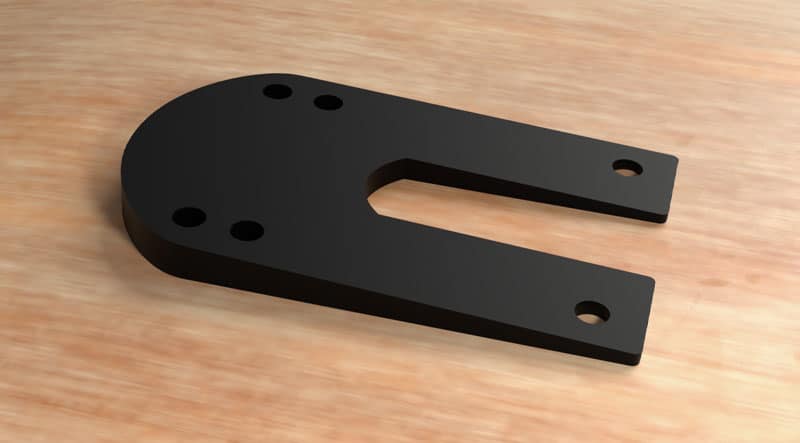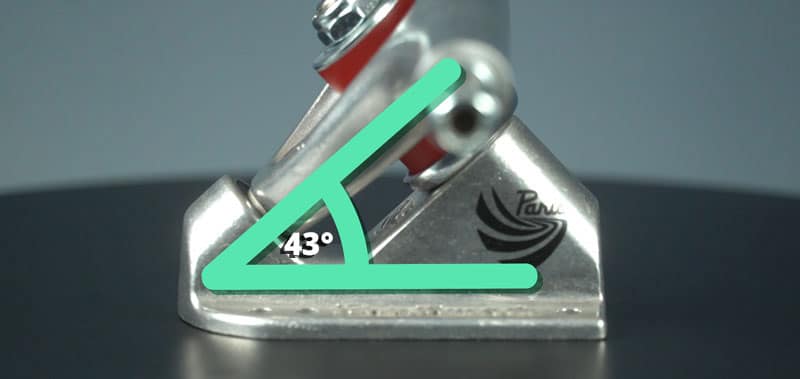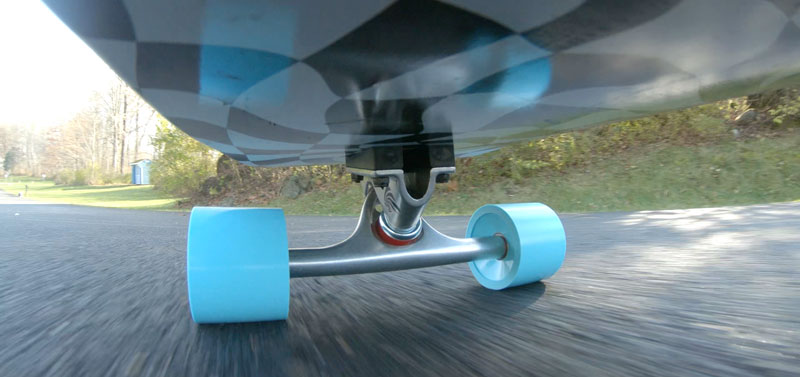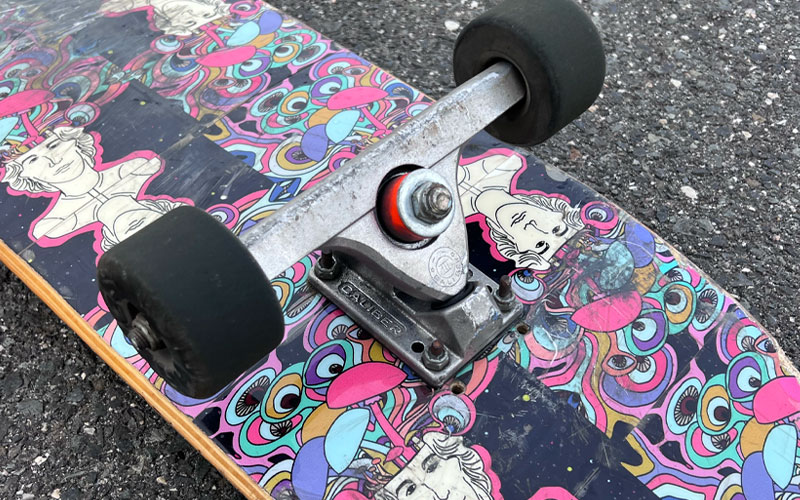Angled riser pads are an affordable way to change your setup’s riding feel.
This article will cover what they do and how to use them.

Purchase Options
If you have a local shop, buy from them!

What do angled riser pads do?
Angled riser pads will change the angle of your trucks. This will affect how your trucks turn and lean. Wedging will make your setup carve harder, and dewedging will add more stability.
Which way do angled riser pads go?
If you want to increase the angle of your trucks and add more turn, face the thick part toward the inside of your board. If you want to decrease the angle and add more stability, face the thick part toward the outside of your board.

Let’s take a look at how angled riser pads work.
Basics of Truck Geometry
Here’s a basic understanding of truck geometry.
When you hear someone refer to a truck as 50, 45, 43, etc. They’re referring to the degree to which the hanger meets the baseplate. This is referred to as the baseplate angle.

You can manipulate your baseplate angles using angled riser pads, commonly called wedging and dewedging.
Wedging increases the baseplate angle, and dewedging decreases it.
Wedging adds more responsiveness because it increases the baseplate angle, which allows the truck hanger to pivot (turn) more.
And dewedging adds more stability because it decreases the baseplate angle, which decreases the ability of the truck hanger to pivot (turn).
I recommend watching Longboard Technology’s YouTube video, where he breaks down how trucks work. It’s helpful to visualize everything.
What’s the difference between turn and lean?
Turn vs Lean Example
Say you’re cruising, and you want to make a sharp turn. Well, what do you do? You shift your weight either toeside or heelside. You lean to the edge of your deck.
Lean is when your deck shifts toward the ground.
Turning occurs when you lean. Leaning your weight creates pressure, making your truck hanger turn in the pivot cup.
Usually, lower-degree trucks are used for higher speeds, like downhill or freeride, because they offer more lean and less turn. You’ll have a lower chance of getting speed wobble.
And a higher baseplate angle has more turn and less lean, which is better for carving. You’ll have a higher chance of getting speed wobble.

Common Setups
Below are common ways to use angled riser pads.
- Front wedge
- Wedge & dewedge
- Double wedge
Front Wedge

A front wedge is when you face the thick end toward the center of your board. This will add more turn and make your setup feel more carvey.
Wedge & Dewedge

A split setup – front wedge & back dewedge. When the front has the thick part toward the center of the board and the back has the thick part toward the tail. This will increase the turn in the front and decrease it in the back.
Double Wedged

A double wedge is when you face both thick ends toward the center of your board. This will feel super responsive, but getting speed wobbles will be easy.
Bottom Line
You can get very technical when it comes to truck geometry. But the goal was to give you a basic understanding of baseplate angles and how to use angled riser pads.
Now get out there and start experimenting!



